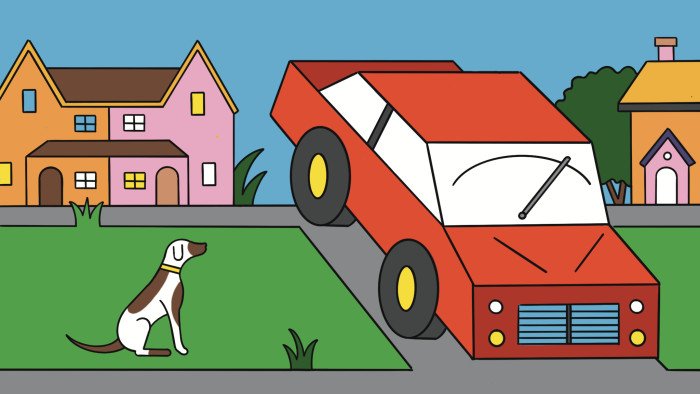America. Land of the free, home of the brave, creator of the finest burgers on the planet, yet manufacturer of some of the worst motor vehicles known to humanity. This is odd given how much they rely on the car.
In recent years, Tesla has reversed the fortunes of the US car export market. In 2024, nearly 243,000 new registrations were made across Europe, over 50,000 in the UK. A success story, you may conclude. Yet the bestselling Y model is assembled in Berlin and sales were down from the previous year.
Some say there’s an aversion to Elon Musk’s political leanings. I’ve owned two Tesla S cars and that’s not it. There are too many on the roads, the designs are outdated and although the tech and battery technology are superior to most other manufacturers, from my experience of trim and detailing, they’re relatively poorly made. They’re devoid of style, personality and taste too. Compared with when they first established in the UK, I found customer service has deteriorated, with long waiting times for calls and repairs that only Tesla dealers can do.
And worse? They’re boring.
I’ll not bother with one of those jelly moulds again. And it doesn’t look like the Cybertruck will be coming to the UK any time soon. Those sharp corners seem unlikely to meet safety standards. And, given its weight, you may require a truck licence to drive one.
When it comes to internal combustion engine cars, the stats couldn’t be starker. Last year, 692,334 EU-made cars were exported to the US, while only 116,207 US-made cars went in the opposite direction, according to the European Automobile Manufacturers’ Association. It was enough to prompt President Trump to decry that Europeans “don’t take our cars”. He has, to the best of my knowledge, not asked himself why.
It’s not because the 10 per cent tariff that the EU charges on US cars exceeds the 2.5 per cent the US currently charges on those from the EU. And it’s certainly not because we don’t like products from the States. We’ll have their tech, trainers, Ralph Lauren, financial services, Coca-Cola and credit cards. We’ll even buy some of their wines. But if we don’t like it, we don’t want it.
The biggest problem is that American cars are designed for American roads, where cornering is considered an optional extra. They’re built to go in a straight line before lurching home to be parked on a driveway the size of Wales. Given their vast proportions, navigating a US-manufactured car into your local multistorey car park will give you palpitations. And good luck trying to reverse it into a space on a London high street — you might spark a public order incident.
One of the US’s bestsellers in the home market, is the Dodge Challenger. A gigantic slab of metal with a massive engine, yet it still risks being overtaken by bicycles on anything resembling a corner. Brilliant, if you live in Kansas, useless if you live anywhere that isn’t built on a giant grid system.
But what about American trucks, you ask. Ah yes, the pick-up truck — a vehicle designed for farmers and contractors, but somehow now owned almost exclusively by suburban dads who think reversing sensors are for the wokerati. The Ford F Series, for example, is the best-selling “car” in the US, selling more than 700,000 units last year. It’s huge, heavy and it guzzles fuel. Why do people buy them? Because marketing executives have convinced Americans that unless they own a vehicle capable of towing an aircraft carrier, their masculinity is at risk. For us, they’re too big, too crass and too conspicuous.
Not every car manufactured in the US is terrible. The Corvette, for example, is a genuinely good car. The latest one even has an engine in the right place — behind the driver. It’s fast, handles pleasingly, and is reasonably well made. For an American car, this is akin to discovering a unicorn in your back garden. The problem? You’ll still look like someone going through a very messy relationship crisis if you drive one. And the plastic interior looks like it was moulded from a microwaveable ready meal tray and features more velour than a 1970s’ boudoir.
I concede that some US cars have a certain charm and a sense of humour — something European manufacturers lost years ago in pursuit of lap times and fuel efficiency. They make cars that make you grin like an idiot, cars that roar like a lion with a sore throat, that offend people by burning inordinate amounts of petrol.
And I should know because, like a vegetarian who’s been caught sneaking off for a steak dinner, I have an awkward admission: I own an American car. It’s a blinged-up Jeep Wrangler, bought on a whim. It’s slathered in military grey matt paint, perched on absurdly large chunky tyres, sports orange leather seats and there’s an excess of unnecessary LED lighting. It resembles a footballer’s rejected custom order.
Predictably, it’s all mouth and no trousers. Put your foot down and it makes a noise like a Spitfire taking off, moving with all the urgency of a mobility scooter. Handling? Like a sausage. Imagine trying to steer a wardrobe down a flight of stairs. I was going to flog it and swear off American cars forever. There’s no rational reason to buy one. But with tariffs looming, it might just become a collector’s item.
Besides, driving for pleasure is a thing of the past. Our roads are a mess: potholes, burst pipes and never-ending 20mph zones. So, if I must endure the misery, I may as well do it in something loud, ridiculous, and vaguely capable of wading through the carnage.
James Max is a broadcaster and property expert. X, Instagram & Threads @thejamesmax




